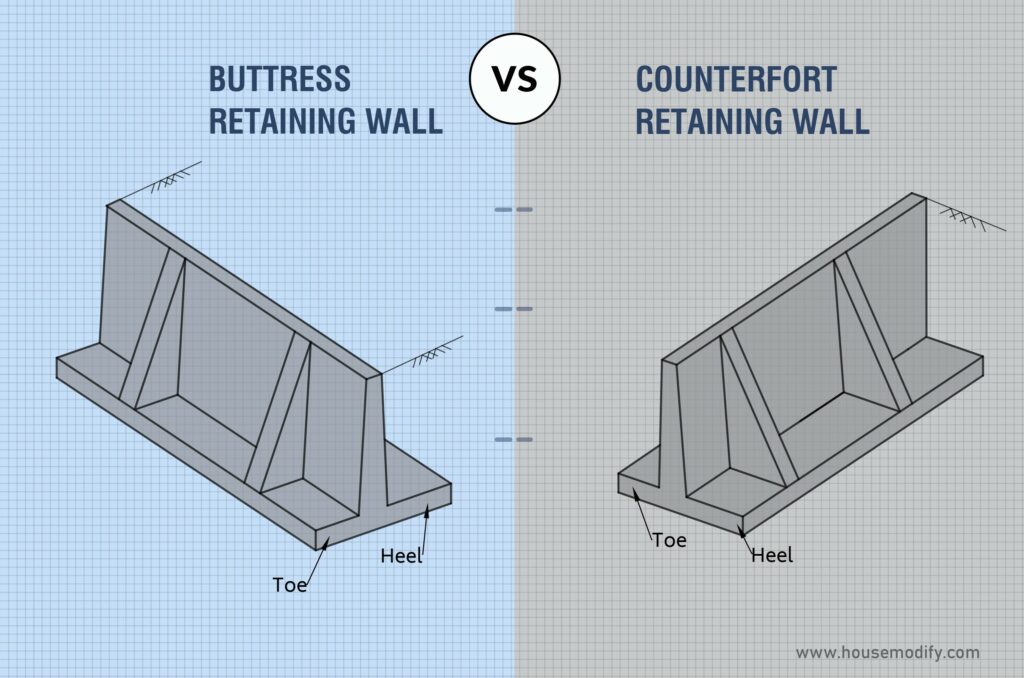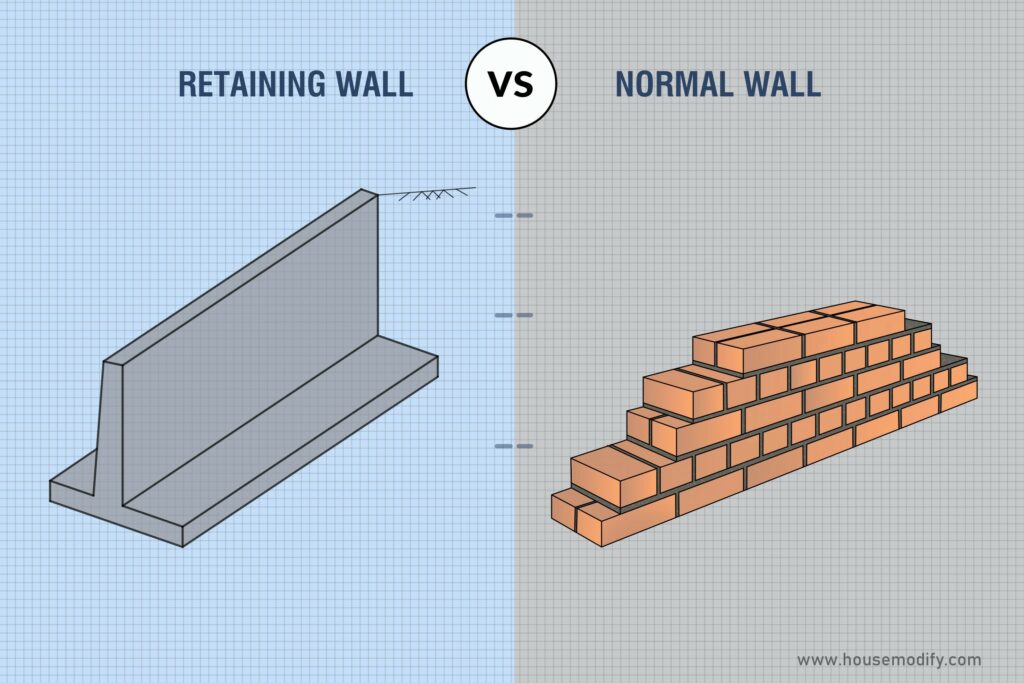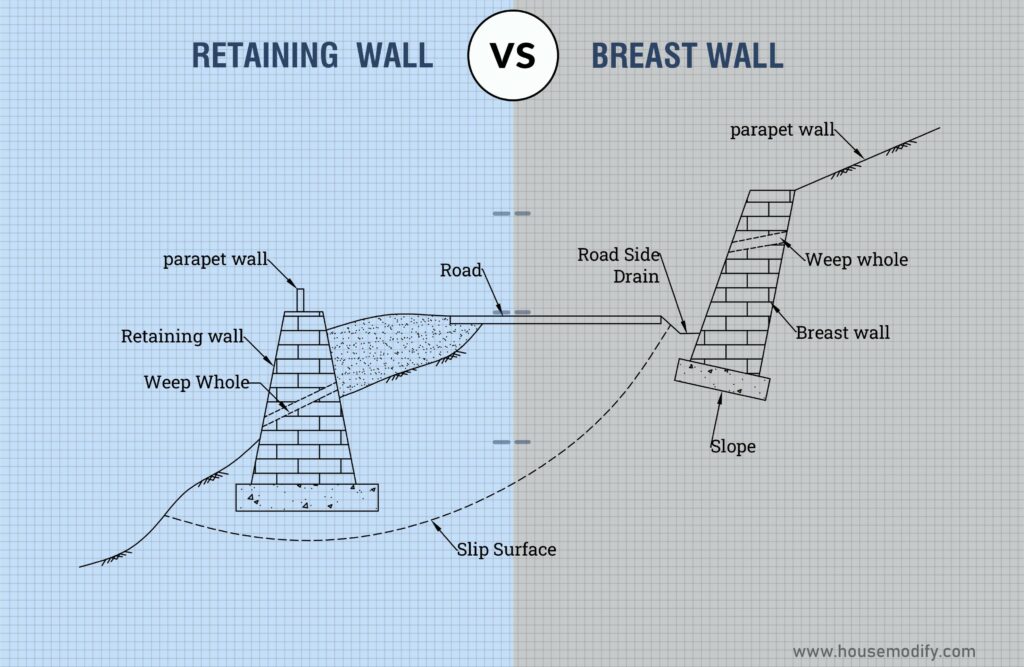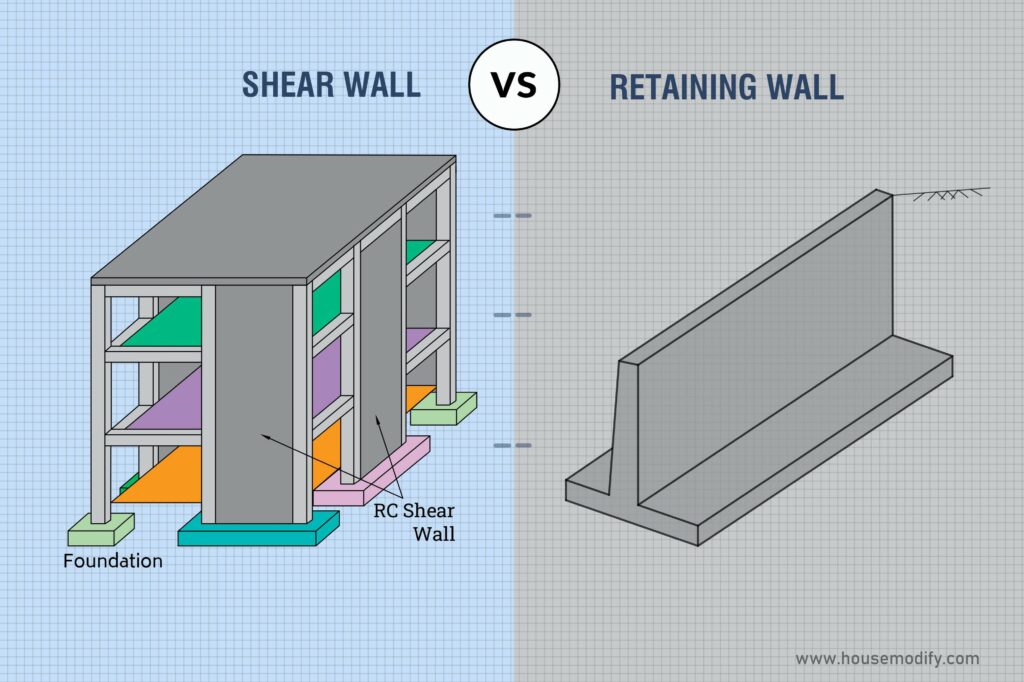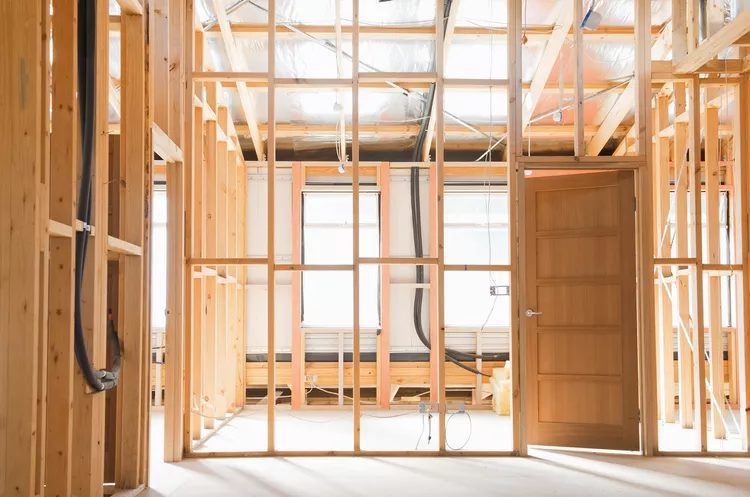The most typical framing method utilized in residential buildings is to frame a wall parallel to the floor ceiling joists.
It makes it possible to build walls that are either taller or lower than the floor joists without requiring you to cut into their cavities.
This technique is typically used when rebuilding a basement since the finished room height is more than the original floor height.
In this case, the wall will be built over the joists that are now supporting the floor.
This method has the benefit that the floor joists don’t need to be removed.
How to Build a Wall Beneath Joist?
Step 1:

Calculate the distance in height between the floor and the joist’s bottom edge.
Cut a top and bottom plate from a 2-by-4 piece of lumber to the required wall length using a circular saw.
Remove the thickness of the top and bottom plates from the measured height before cutting the studs.
Determine the number of studs needed for a typical 16-inch spacing by multiplying the wall’s length in inches by 16 and rounding it up.
Step 2:
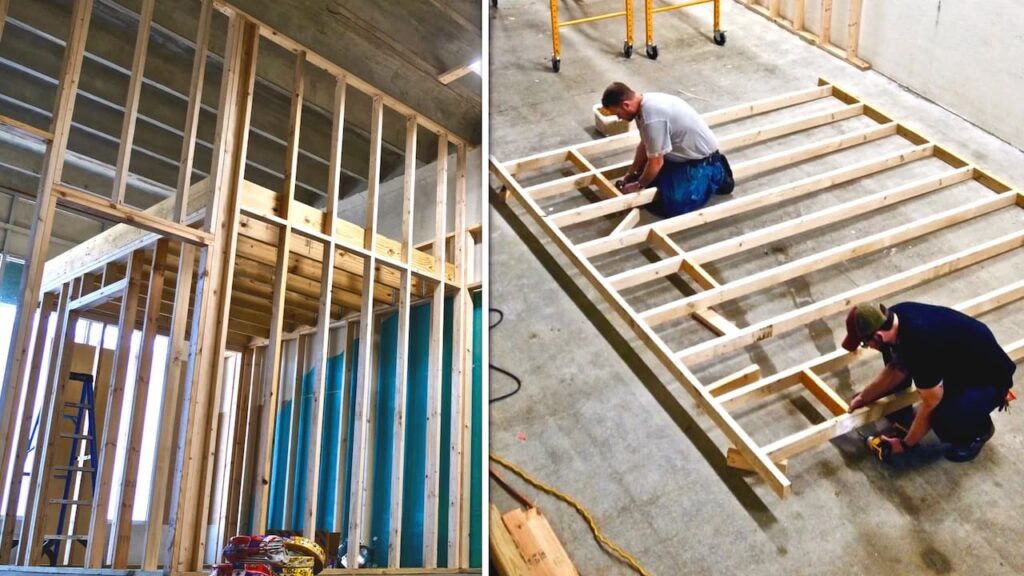
Place studs along the plate’s edges, one at each end and every 16 inches in between and align the ends of the plates before pressing their face to face.
Build the wall on the ground by sandwiching the studs between the plates and fastening each end of the studs with two nails through the faces of the plates.
Step 3:

Hoist the wall upright by tilting it onto its support plate.
Place the top plate of the wall precisely below the bottom border of the parallel joist.
With the nail gun, plumb the wall and affix it to the joist and flooring.
At least 24 inches between each nail is recommended, however, municipal laws may also apply.
Step 4:
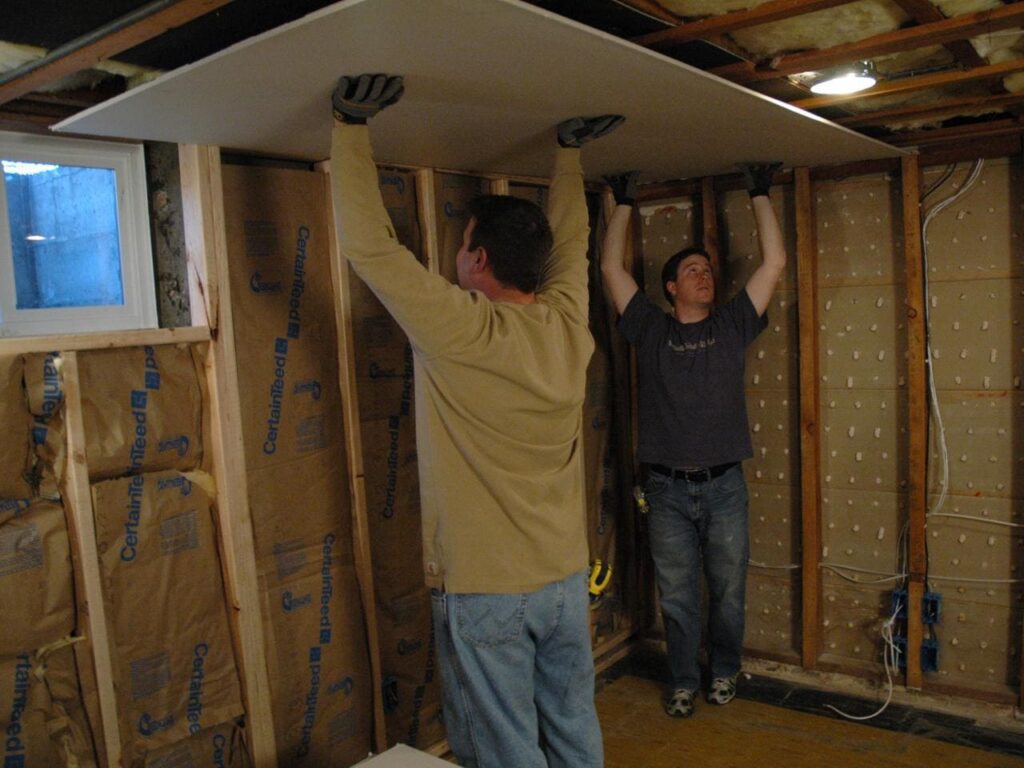
To provide fastening for the ceiling drywall, cut two pieces of 2-by-4 to the length of the wall’s top plate.
On top of the wall, these pieces will be placed.
Place a piece, face down, butting its edges against the opposing faces of the joist on either side at the top plate of the wall.
Match the ends of the planks to the corners of the wall.
Using the nail gun, attach the boards to the top plate by spacing the nails roughly every 24 inches.
Reduce the nail size if your gun is loaded with 16d nails to stop the sharp ends from sticking out into the cavity of the wall.
Wall In Between Joists:
Step 1:
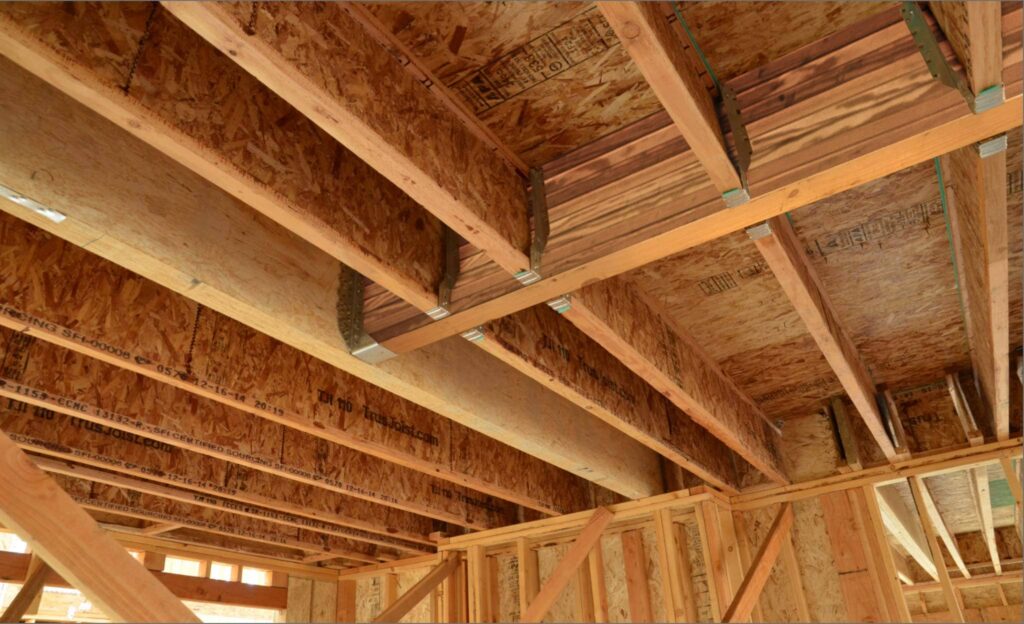
It is important to frame a wall parallel to the floor ceiling joists.
To calculate the necessary number of blocks, divide the desired wall’s length by 24 inches; round the result to get a final number.
Cut the necessary number of blocks out of 2-by-4 framework lumber using the chop saw.
Step 2:
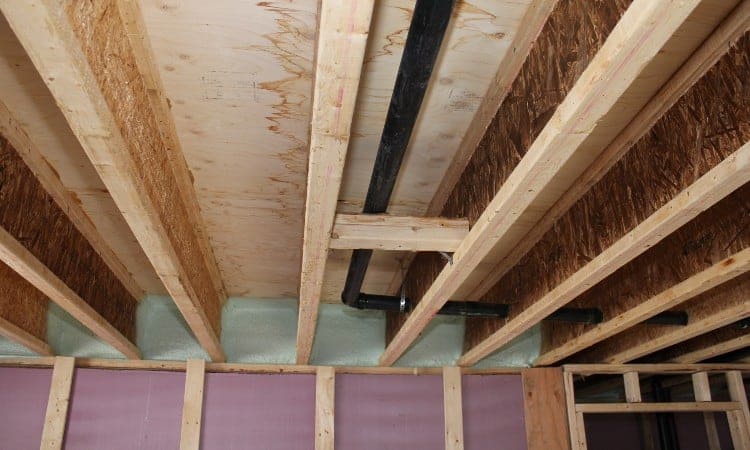
Align the blocks flush with the bottom edges of the joists perpendicularly between them.
The exterior faces of the joists and the ends of the blocks should be nailed with a framing nail gun.
Along the length of the wall that is planned, place blocks at least every 24 inches in the centre.
Step 3:

Cut the top and bottom plates of the wall to the appropriate final length.
Studs should be cut to fit the space between the floor and the joists’ bottom edges, less the thickness of the top and bottom plates.
Decide where to insert studs on the field: every 16 inches on centre throughout the field at the ends of the top and bottom plates.
Step 4:
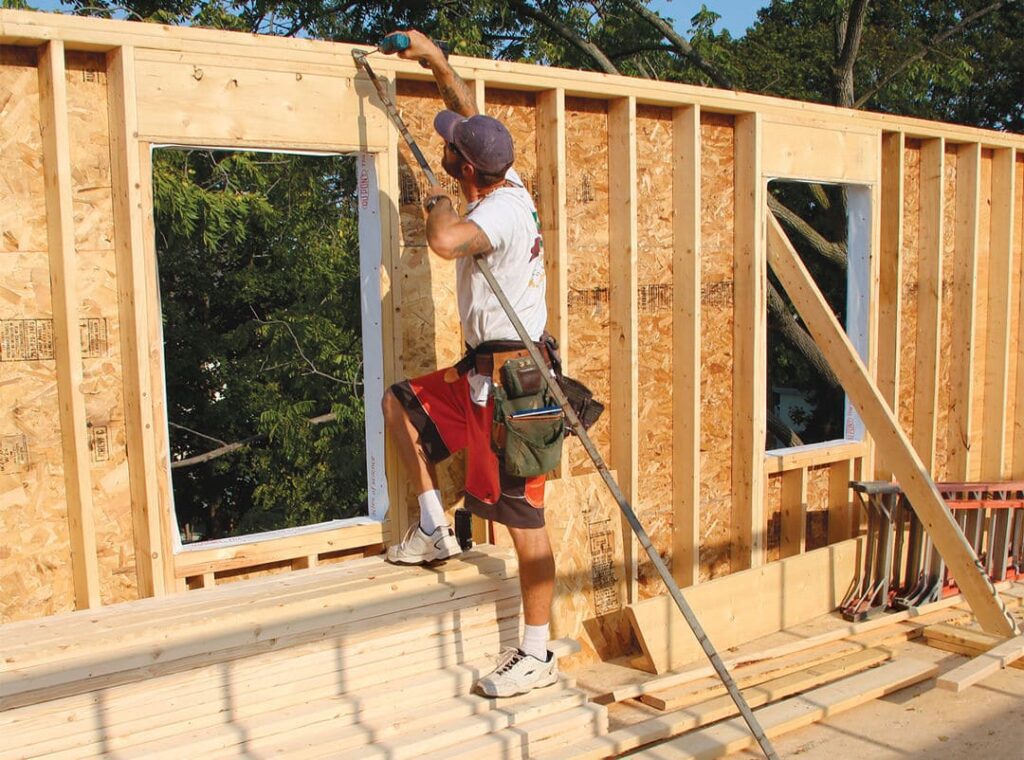
Build the wall by placing studs between the plates and attaching them to the plates with two framing nails at either end.
Lift the wall upright while tilting the wall on its bottom plate.
Place the wall between the parallel joists in the appropriate location, snugging the top plate of the wall against the blocking.
Framing a Basement Wall Parallel to Floor Joists:
- It is important to gauge the distance between the joists.
- Depending on the distance between your studs, divide the desired length of the wall by either 16 or 24 inches. This will help you determine how many blocks you’ll need.
- Using a chop saw, create the required number of blocks from the 2×4 lumber.
- Blocks should be positioned at a straight angle to the floor joists.
- Ensure that the block’s faces are perpendicular to the joist’s bottom edges.
- The blocks should be either 16 inches or 24 inches spaced along the whole basement wall.
- Using a framing nail gun, drive nails through the joists outside surface into the ends of the blocks.
- The base plate and top plate should be measured and cut to match the wall’s length.
- The thickness of the top and bottom plates should be taken into account while measuring and cutting the studs to correspond with the height between the floor joists and the ceiling.
- A 16-inch centre space should exist between the top and bottom plates when installing the studs.
- Before being lifted, the wall should be put together on the ground.
- Ensure that the blocking and base plate are flush.
- To hold the wall in place, drive framing nails through the top plate and into the ceiling.
- After making sure the wall is properly oriented, drive framing nails into the blocking and through the exposed face of the base plate.
Do You Insulate Walls Before Framing?
Your basement has to be properly insulated because they are prone to moisture issues.
The foundation wall should be able to dry inward thanks to the insulation that was put there.
The basement becomes impenetrable to the rain as the wall dries inward, keeping excessive rainwater from accumulating.
You can insulate walls either before or after framing depending on the texture of your walls.
When concrete walls are smooth, rigid foam sheets work well.
For uneven walls, spray foam may be used to frame a wall parallel to the floor ceiling joists.
When the spray foam touches the concrete wall, it is activated forming a continuous layer of insulation.
Before framing, it is a good idea to insulate walls using firm foam sheets.
On the other hand, spray foam insulation is helpful after framing.
Advantages of Insulating Basement Walls:
The advantages of insulating the basement walls are as follows:
- It lessens thermal bridging and heat loss through basement walls.
- It provides the basement with an additional layer of defence against moisture penetration.
- It prevents damage to the damp-proof coating during backfilling.
- By reducing temperature changes in your basement, it controls the temperature inside the space.
- It lessens the possibility of condensation on the basement walls, which in turn lessens the chance of mould growth.
FAQ- How to Frame a Wall Parallel to Ceiling Joists?
Q1. Is it normal for ceiling joists to go parallel to load-bearing walls?
Check the direction of the joists in an unfinished attic or basement.
If the wall is parallel to the joists, it is most likely not load-bearing.
If it is perpendicular, it is most likely a load-bearing wall.
Q2. Is it possible to hang the ceiling drywall parallel to the joists?
If joists are spaced no more than 24 inches apart, regular 1/2-inch drywall ceilings can be hung perpendicularly (*always check local codes).
Maximum separation when hanging parallel is 16 inches on the centre.
Q3. Can you support loads on a parallel wall?
It is possible to classify as load-bearing any outside wall that rests on the foundation sill.
Load-bearing walls are perpendicular to the joists.
On occasion, a bearing wall will be positioned just beneath a single joist.
Conclusion:
The stability of your basement wall is guaranteed by proper framing.
It also impacts how simple the plumbing and electrical wiring will be completed.
A trustworthy outline is provided by careful planning for the framing process, ensuring that nothing is missed during the exercise.
A basement wall’s framing requires a lot of time.
Your local government may also inspect the wall to make sure the building conforms to the established standards.
Either hire experts or take on the process yourself.
If you choose to do it yourself, the information provided here serves as a trustworthy manual to frame your basement wall parallel to ceiling joists.
